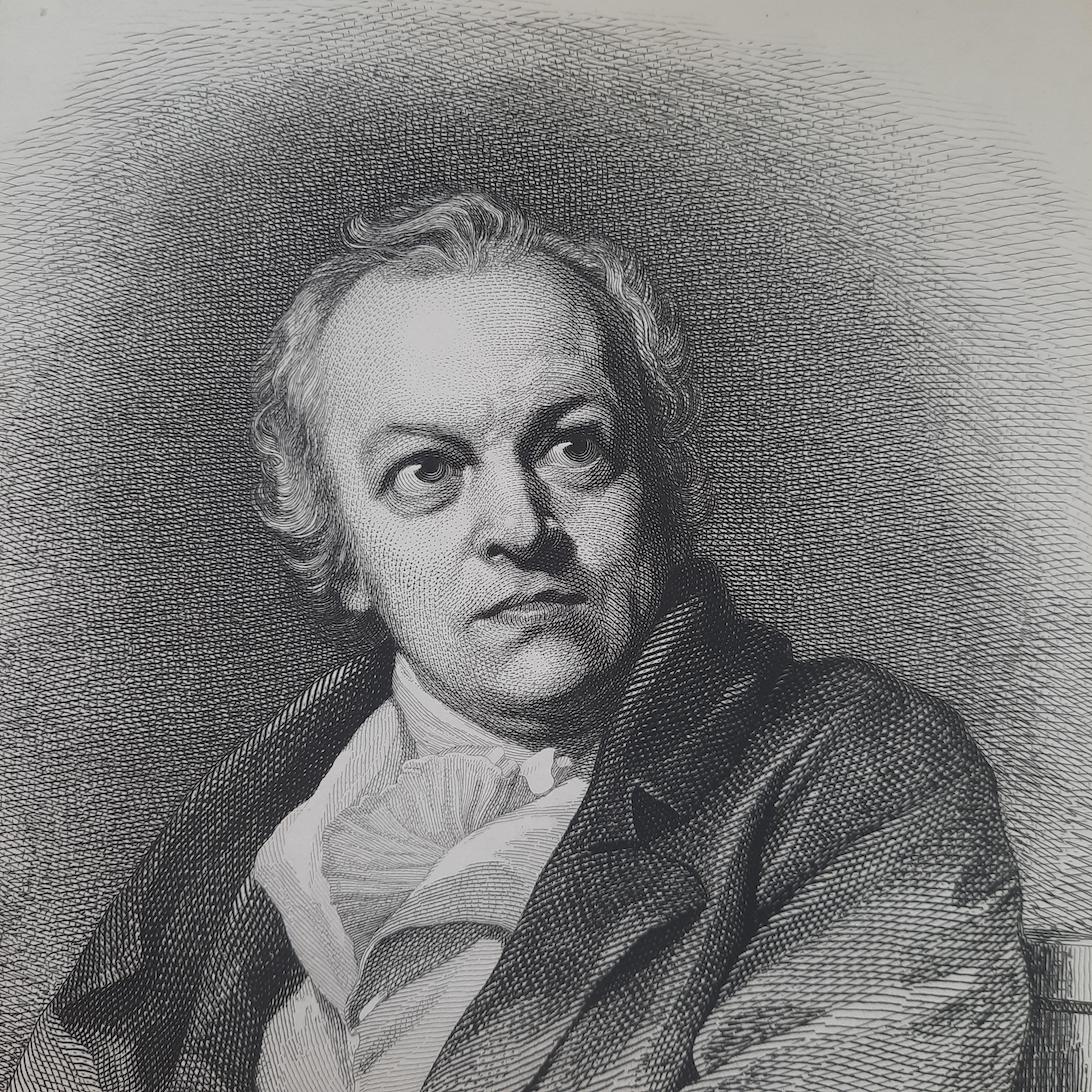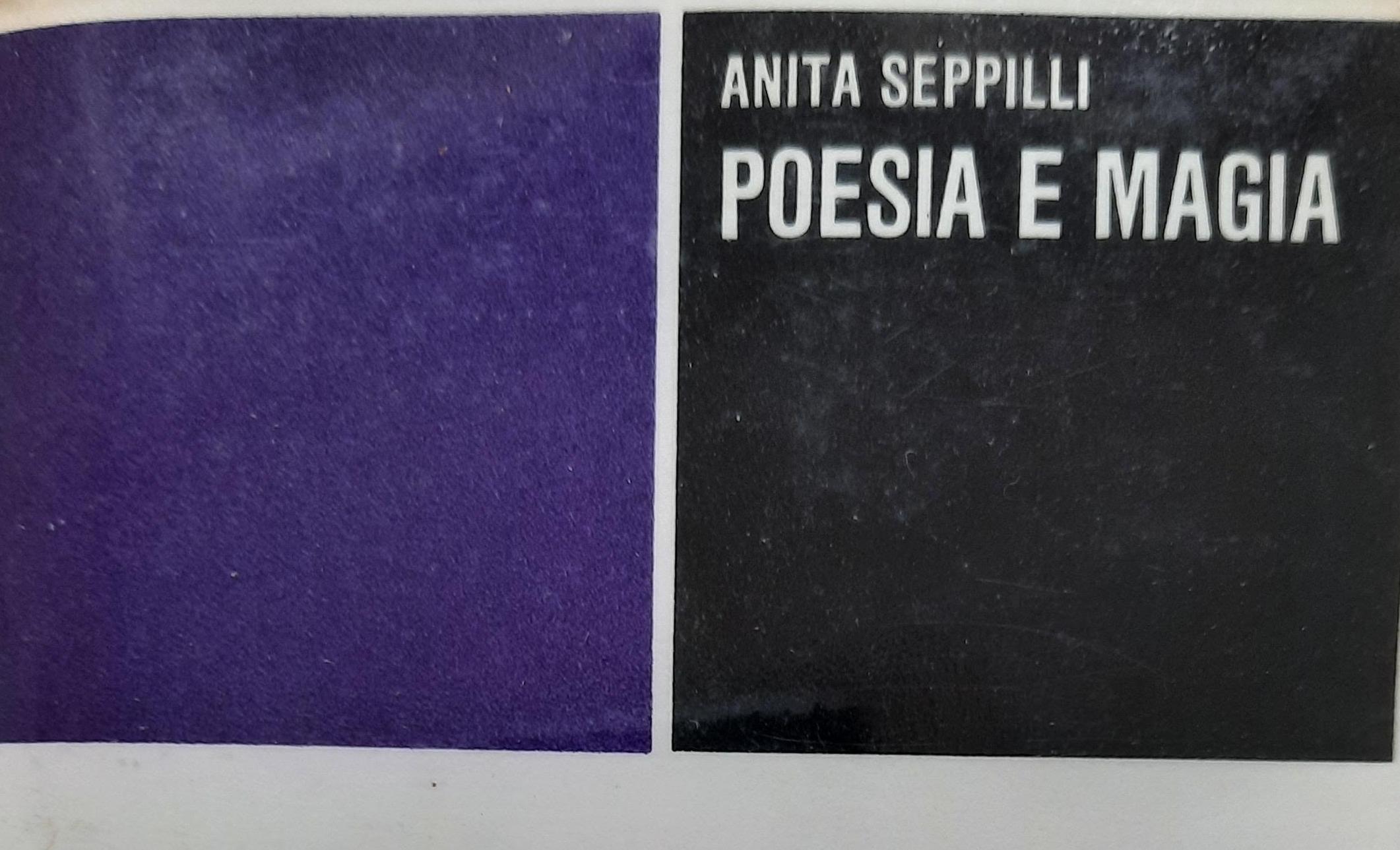Luigi Schiavonetti, Portrait of William Blake, after Thomas Phillips, 1808, etching.

Inscription: ‘Painted by T. Phillips R. A. / Engraved by L Schiavonetti V A / William Blake / London, published by R.H.Cromek, 64 Newman St. May 1st 1808’.
This etched portrait of the artist and poet William Blake was commissioned by the publisher Robert Hartley Cromek as the frontispiece for an edition of Robert Blair’s The Grave (1743) that was produced in 1808. Cromek arranged for Blake to sit to the fashionable portraitist Thomas Phillips (the picture is now in the National Portrait Gallery), and then for the printmaker Luigi Schiavonetti to copy the oil painting in etching. Blake’s portrait was painted by Phillips during Spring 1807 in his studio at 8 George Street, Hannover Square, and it was finished on 4 April according to Phillips’s diary.
Phillips liked to engage his sitters in conversation about their professions in order to catch a characteristic expression. In Blake’s case this led to a friendly dispute about whether Michelangelo or the ‘over-rated’ Raphael had painted angels better. Blake stated categorically that Michelangelo’s representations of angels were superior, and that in spite of never having seen any of Michelangelo’s paintings, his opinion was based on good authority: ‘“I speak from the opinion of a friend who could not be mistaken”. “A valuable friend truly”, said Phillips, “and who may he be I pray?” “The archangel Gabriel, Sir”, answered Blake’.[1]
Phillips asked how Blake knew that his supernatural friend, who claimed to have sat for Michelangelo, was Gabriel and not an evil spirit. Pleased with this remark, Blake told of how he had asked that same question himself of the vision. According to the version of the story that Phillips related to Alan Cunningham, Blake said that he ‘“looked whence the voice came, and was then aware of a shining shape, with bright wings, who diffused much light. As I looked, the shape dilated more and more: he waved his hands; the roof of my study opened; he ascended into heaven; he stood in the sun, and beckoning to me, moved the universe. An angel of evil could not have done that – it was the arch-angel Gabriel”. The painter marvelled much at this wild story; but he caught from Blake’s looks, as he related it, that rapt poetic expression which has rendered his portrait one of the finest of the English school’.[2]
The designs for Blair’s The Grave were the works by Blake that achieved the greatest public fame during his lifetime. Contemporaries had mixed views, however, on whether this was because of the remarkable invention of the artist or the suave accomplishment of the printmaker. Schiavonetti, himself, seems to have credited the quality of Blake’s drawing for the success of the prints, writing to Cromek on 21 July 1807 to state that he had almost finished etching Blake’s Day of Judgment: ‘As to what degree of plaisure [sic] I have found in Engraving it you may easily conseive [sic] it from the accuracy of the outline, the truth of the light and shadow, and the magical way with which the effect of [h]armony is contrived in the Drawing’.[3]
Blake had expected to engrave his own drawings, producing twenty at one guinea a piece, and felt cheated by Cromek when he gave the more lucrative work of printmaking to Schiavonetti. He certainly associated the publisher with the appellation ‘knave’ in his notebook: ‘A petty sneaking knave I knew… / “O! Mr. Cromek, how do ye do?”’. John Thomas Smith in his biography of Blake described Cromek as ‘a man who endeavoured to live by speculating upon the talent of others’.[4] Cromek did admire Blake to some extent but also clearly saw him as exploitable. In a letter to the poet James Montgomery he characterized Blake as a ‘wild & wonderful genius’, and an inhabitant of ‘Fairy Land’ who believed that ‘what has been called Delusion is the only Reality’ and ‘that this World is the only Cheat, Imagination the only Truth!’.[5]
Blake in a poem included in a letter to his patron Thomas Butts in 1802 explained how ‘a double vision is always with me’: ‘With my inward Eye, ‘tis an old Man grey / With my outward a Thistle across the way’.[6] At other times, however, this double vision expanded to a ‘three fold’ or even ‘fourfold vision’ that is the poet’s ‘supreme delight’. On the other hand, to see things only from a materialistic ‘single vision’ is to partake in ‘Newton’s sleep’.[7] Blake complained in a subsequent letter to Butts of the 10 January 1803 that the ‘drudgery’ of commissioned work imposed on him by his patron William Hayley was distracting him from a higher calling that placed him ‘under the direction of Messengers from Heaven Daily & Nightly’.[8] Such talk of supernatural visitations led some of his contemporaries to consider Blake to be insane, and Alexander Gilchrist even included a chapter in his biography of Blake entitled ‘Mad or Not Mad?’ (first published in 1863). Blake, however, was sure of the divine source of his visions, writing to Butts in 1803, of the ‘immense number of verses on One Grand Theme Similar to Homers Iliad or Miltons Paradise Lost’ that he had written in three years living at Felpham. Blake had ‘written this poem from immediate Dictation twelve or sometimes twenty or thirty lines at a time without Premeditation & even against my Will’.[9] Blake is referring here to his long poem Milton a Poem in 2 Books of 1804 in which he claimed to have been possessed by the spirit of John Milton who entered his body via his foot: ‘Then first I saw him in the Zenith as a falling star, / Descending perpendicular, swift as the swallow or swift; /And on my left foot falling on the tarsus, enterd there…’.[10]
Blake’s interest in Milton was probably stimulated by his patron Hayley’s Milton collection, – put together by Hayley to aid him in writing his 1796 biography of the author of Paradise Lost – and by the commission to produce a portrait of Milton for Hayley’s Marine Turret library. However, in spite of their mutual enthusiasm for Milton as a poet, Hayley and Blake had very different understandings of the meaning of poetry. As Blake stated of Hayley in a letter to his brother James: ‘‘The truth is As a Poet he is frightend at me’.[11] Blake had a prophetic conception of poetry where direct inspiration was a surer guide than the imitation of approved models. As he wrote in the Preface to Milton: ‘We do not want either Greek or Roman Models if we are but just & true to our own Imaginations, those Worlds of Eternity in which we shall live for ever’. Later in the same poem we find the lines: ‘I am inspired! I know it is Truth! for I sing / According to the inspiration of the Poetic Genius’.[12]

A poet immersed in prophetic visions of eternity, taking dictation from supernatural messengers, and communicating with the dead through a form of possession, Blake is far closer to the mantic and inspired poet discussed by Anita Seppilli than to the polite moralising in verse of William Hayley’s Triumphs of Temper (1781). Seppilli wrote that when Ovid explained in Fasti, VI, 5-8, that ‘there is a god within us (‘Est deus in nobis’), it is when he stirs us that our bosom warms, it is his impulse that sows the seeds of inspiration’, he was both describing a very ancient experience and one that is still felt by contemporary artists (although no longer connected to a superhuman cause). She goes on to add that ‘the very word “inspiration” already suggests that poetry was not experienced as something born inside the individual human soul, but as something – a breath, a spirit? – that comes from outside and takes possession’ [la parola stessa “ispirazione” ci suggerisce già che la poesia non era sentita come qualcosa che nasceva dentro allo spirito individuale dell’uomo, ma come qualcosa – un soffio, uno spirito? – che veniva dal di fuori e si impadroniva dell’uomo].[13]
[1] G. E. Bentley, Blake Records, second edition, New Haven and London: Yale University Press, 2004, pp. 232-33.
[2] Blake Records, pp. 233-34; Allan Cunningham, The Cabinet Gallery of Pictures, London, 1833, I, pp. 11-13.
[3] Blake Records, p. 245.
[4] Blake Records, p. 613.
[5] R. H. Cromek to James Montgomery, April 1807, Blake Records, p. 235.
[6] William Blake to Thomas Butts, 22 November 1802, David V. Erdman (ed.), The Complete Poetry & Prose of William Blake, New York: Anchor Books, 1988, p. 721.
[7] Ibid, p. 722.
[8] Ibid, p. 724.
[9] William Blake to Thomas Butts, 25 April 1803, Ibid, pp. 728-29.
[10] Ibid, p. 110.
[11] William Blake to James Blake, 30 January 1803, Ibid, p. 725.
[12] Ibid, pp. 108-9.
[13] Anita Seppilli, Poesia e magia, Torino: Einaudi, 1972, p. 186.
